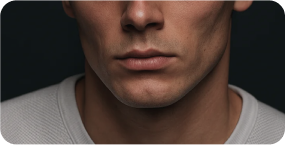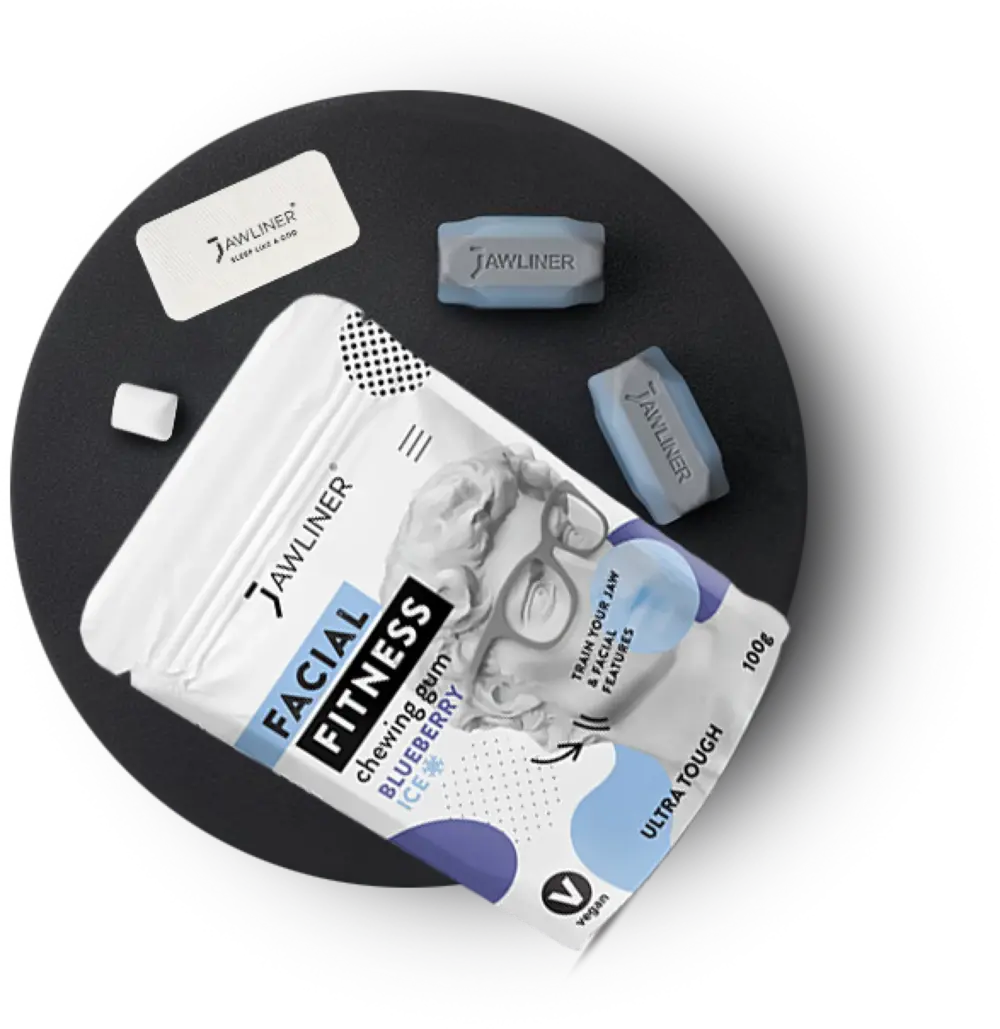Do you know the feeling when you can hardly breathe at night because of a blocked nose? Or when your partner complains about your snoring? Many people suffer from problems with nasal breathing, often caused by colds, allergies, or simply because their nasal passages are too narrow.
The good news: You don't just have to accept it. There is a simple, immediately noticeable way — without medication — to support natural nasal breathing. Nose tape, also known as nasal strips or nasal plasters, can help you breathe more freely, sleep better, and feel more energetic.
In this article, you’ll learn how nose tape works, when it might be useful, and what to look for when buying it. No expensive treatments, no complicated therapies — just a practical option to improve nasal breathing that you can try right away.
Contents:
1. What is Nose Tape and how does it work?
2. Areas of Application
2.1 Anti-Snoring Tape for Quieter Nights
2.2 More Power During Sports
2.3 Nose Tape for Colds and Allergies
3. Correct Application of Nose Tape
3.1 Preparing the Skin
3.2 Proper Positioning
3.3 Tips for Optimal Hold
3.4 Gentle Removal
4. Why the JAWLINER® Nose Tape is the Right Choice
4.1 How JAWLINER® Nose Tape Supports You
4.2 Safety and Compatibility of JAWLINER® Nose Tapes
5. When Does Nose Tape Help — and When Doesn’t It?
5.1 Nose Tape Against Snoring
5.2 Nose Tape in Sports
6. Conclusion: When is Nose Tape Worth It?
7. FAQ – the Most Common Questions About Nose Tapes
What is Nose Tape and how does it work?
Nose tape is a product specifically designed to support your nasal breathing. It consists of a skin-friendly plaster with flexible plastic strips embedded. These reinforcing elements are the key.
The principle is simple: When you stick the tape across your nostrils, the integrated strips gently lift your nasal walls and mechanically spread them. This opens your nasal passages, reduces airflow resistance, and allows air to flow more freely.
The construction is well thought-out: The plaster adheres securely to your skin with a hypoallergenic, breathable adhesive. You can wear it comfortably for several hours, even overnight. High-quality nasal strips are typically made of materials like fleece and plastic that are dermatologically tested.
Important: Nose tape works only externally on the nostrils. It is not intended for use inside the nasal cavities and remains on the nasal surface.
Areas of Application of Nose Tape
Anti-Snoring Tape for Quieter Nights
Anti-snoring tapes can help mechanically widen the nostrils, thereby facilitating nasal breathing. When the nose is blocked or constricted, many people breathe through their mouth, which can promote snoring. By making nasal breathing easier, mouth breathing — and thus possibly snoring — can be reduced. Some users also report a subjectively improved sleep quality.
More Power During Sports
In sports, especially in endurance disciplines such as running, cycling, or boxing, every breath counts. Every extra milliliter of oxygen can make the difference. Here, nose tape supports you by promoting your nasal breathing.
When your nasal passages stay open, more air flows in with each breath. Many elite athletes use it to breathe better during training — have you tried it?
Nose Tape for Colds and Allergies
When your nose is blocked due to a cold or allergies, the mucous membranes swell and breathing becomes difficult. Nose tape can help by mechanically opening the outer nasal passages and making it easier to breathe through your nose.
Also with hay fever or allergic reactions, when the nose is irritated and clogged, many find nose tape a pleasant addition. Of course, it does not replace medical treatment, but it can provide freer nasal breathing — completely without active ingredients.
Many appreciate nose tape as an alternative to decongestant nasal sprays — especially those who want to reduce their nasal spray use or are looking for a way to breathe more freely again without sprays.
Correct Application of Nose Tape
With this simple step-by-step guide, your nose tape will sit securely and deliver the best results:
Preparing the Skin
- Thoroughly clean your nose: Remove any residues of creams, oils, or makeup around the nostrils.
- Completely dry the skin: Moisture reduces the adhesive’s grip.
- Avoid greasy cosmetics before bedtime: They weaken the adhesive strength.
Proper Positioning
- Remove the protective film from the nasal strip.
- Place the tape centrally across both nostrils.
- Make sure the plastic strips run across the nose.
- Press the plaster gently but firmly to activate the mechanical widening.
Tips for Optimal Hold
- Use the tape only once — after removal it loses its adhesive power.
- For better hold overnight, avoid applying it immediately after showering.
Gentle Removal
- After use, e.g., the next morning, remove the tape slowly and carefully. Loosen it piece by piece rather than pulling it off abruptly. This protects your skin from irritation.
Why the JAWLINER® Nose Tape is the Right Choice
If you’re looking for a nasal strip that delivers what it promises, you don’t need a lengthy market analysis — you need quality. That’s exactly why the JAWLINER® Nose Tape was developed.

Compared to conventional nasal strips, the JAWLINER® Nose Tape offers you decisive advantages:
✔ Extra-large adhesive surfaces — for maximum hold even overnight and during training
✔ Medical-grade, hypoallergenic adhesive — gentle on the skin, without irritation
✔ Matte, transparent design — almost invisible, even during the day
✔ 100% vegan & dermatologically tested, recommended by professionals
You can order it directly online in the Jawliner Shop — without detours via pharmacies or overpriced alternatives. With just a few clicks, it’s ordered and at your door within 1–3 days.
💡 Tip: Get the 3-month supply with 90 tapes and save up to 33%. That way, you’ll always have enough — for training, sleep, and everyday life.
How JAWLINER® Nose Tape Supports You
-
Easy to use
No special knowledge or equipment needed. Peel off, stick on, done. -
Ready to use immediately
Unlike many other methods, you can use the tape right away — no preparation or acclimatization needed. -
Skin-friendly
The JAWLINER® Nose Tape is made of high-quality, dermatologically tested materials. It is vegan, hypoallergenic, and suitable for sensitive skin. -
Discreet and comfortable
Thanks to its matte, transparent design, it is hardly noticeable. You can wear it at night, during sports, or during the day without any problem. -
Free from habituation effects
Unlike medications or sprays, there are no systemic side effects. The tape supports you exactly when you need it — and only as long as you want. -
Practical in everyday life
Whether during training, sleep, or on the go — the JAWLINER® Nose Tape adapts to your daily life and stays reliably in place.
Safety and Compatibility of JAWLINER® Nose Tapes
The JAWLINER® Nose Tape is made of skin-friendly, dermatologically tested materials. It is 100% vegan, hypoallergenic, and manufactured according to medical standards.
In rare cases, a slight pressure sensation may occur immediately after application, but it usually disappears after a short time. To ensure your tape sits safely and comfortably, always make sure your skin is clean and dry and remove it slowly and gently after use.
When Does Nose Tape Help — and When Doesn’t It?
Nose Tape Against Snoring
Nose tape can provide noticeable relief if your nose doesn’t let enough air through while breathing. It can be especially helpful for:
- narrowed nasal valves or passages
- a narrow nasal structure
- swollen mucous membranes due to colds or allergies
However, there are situations where nasal strips may have little or no effect. For example:
- if your snoring is primarily caused by the throat or a relaxed uvula
- in cases of severe obesity, which can further narrow the airways
- in forms of sleep apnea that require medical treatment
The JAWLINER® Nose Tape was developed to support you exactly when the cause of your problem lies in the nose — with secure hold, skin-friendly material, and a discreet design of the tapes.
Nose Tape in Sports
Many athletes and even elite athletes use nose tape to support their nasal breathing — especially during intense workouts or endurance activities. It opens the nostrils and can thus make breathing easier. Important: Nose tape does not replace training or medical treatment.
In our community, many athletes describe that their nasal breathing feels more comfortable with the JAWLINER® Nose Tapes and that they therefore experience training as more relaxed. Of course, every body reacts individually — try it out and see how it supports you during sports.
Conclusion: When is Nose Tape Worth It?
Nose tape is a simple and practical way to support your nasal breathing — whether when sleeping, during sports, or when your nose is blocked. You don’t need medication, devices, or acclimatization: just stick it on and breathe. Many use it especially when they feel they breathe worse through the nose at night or snore, want to ease nasal breathing during training, or are looking for an uncomplicated, drug-free support.
FAQ – The Most Common Questions About Nose Tape
Are nose strips useful?
Nose strips are especially useful when nasal breathing is made difficult by narrow nostrils or swollen mucous membranes. They mechanically open the nasal passages and can thus make breathing easier — especially during sleep or sports.
How long can you wear nose tape?
Nose strips are intended for single use and can stay on the skin for several hours. Afterwards, you should remove them gently to avoid skin irritation.
Why does nose tape improve airflow?
The integrated reinforcement strips gently lift the nostrils and widen the outer nasal passages. As a result, many find that air flows more easily through the nose, especially when the nasal valves are naturally narrow.
Can you wear nose tape during the day?
Yes, nose strips can be worn both at night and during the day. The JAWLINER® Nose Tapes, for example, are discreet enough to use them even on the go or during sports.
Do nose strips help with allergies?
Nose strips can also support nasal breathing with allergy-related swelling. However, they do not replace medical treatment and are merely an additional measure.
Are nose tapes suitable for sensitive skin?
Many nose strips are made from hypoallergenic, skin-friendly materials. If you have very sensitive skin, you should ensure clean, dry skin and remove the strip slowly.
Can you reuse nose strips?
No, nose strips are single-use products. After removal, they lose their adhesive strength and should be replaced with a fresh strip.






